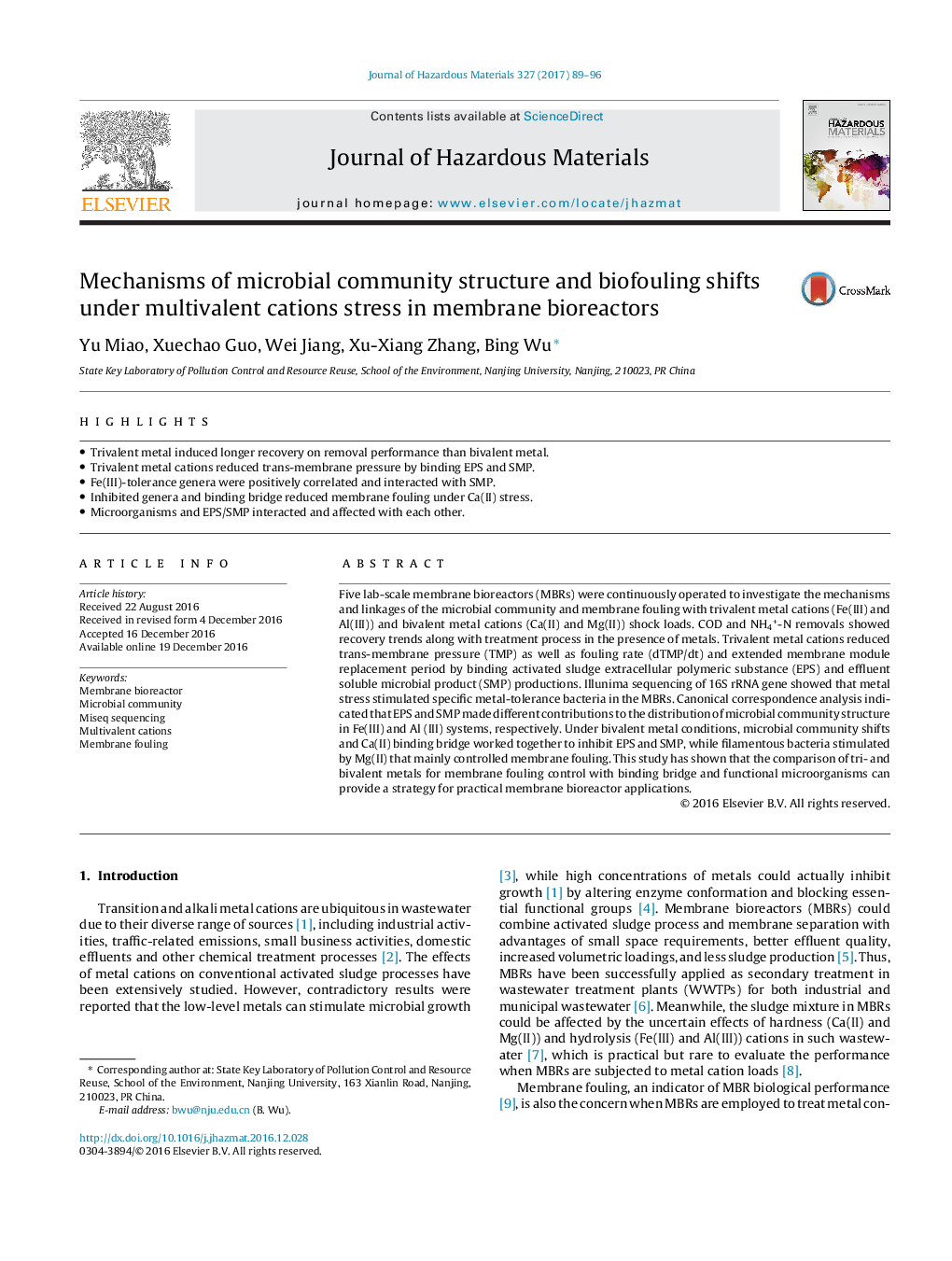| Article ID | Journal | Published Year | Pages | File Type |
|---|---|---|---|---|
| 4979816 | Journal of Hazardous Materials | 2017 | 8 Pages |
Abstract
Five lab-scale membrane bioreactors (MBRs) were continuously operated to investigate the mechanisms and linkages of the microbial community and membrane fouling with trivalent metal cations (Fe(III) and Al(III)) and bivalent metal cations (Ca(II) and Mg(II)) shock loads. COD and NH4+-N removals showed recovery trends along with treatment process in the presence of metals. Trivalent metal cations reduced trans-membrane pressure (TMP) as well as fouling rate (dTMP/dt) and extended membrane module replacement period by binding activated sludge extracellular polymeric substance (EPS) and effluent soluble microbial product (SMP) productions. Illunima sequencing of 16S rRNA gene showed that metal stress stimulated specific metal-tolerance bacteria in the MBRs. Canonical correspondence analysis indicated that EPS and SMP made different contributions to the distribution of microbial community structure in Fe(III) and Al (III) systems, respectively. Under bivalent metal conditions, microbial community shifts and Ca(II) binding bridge worked together to inhibit EPS and SMP, while filamentous bacteria stimulated by Mg(II) that mainly controlled membrane fouling. This study has shown that the comparison of tri- and bivalent metals for membrane fouling control with binding bridge and functional microorganisms can provide a strategy for practical membrane bioreactor applications.
Related Topics
Physical Sciences and Engineering
Chemical Engineering
Chemical Health and Safety
Authors
Yu Miao, Xuechao Guo, Wei Jiang, Xu-Xiang Zhang, Bing Wu,
